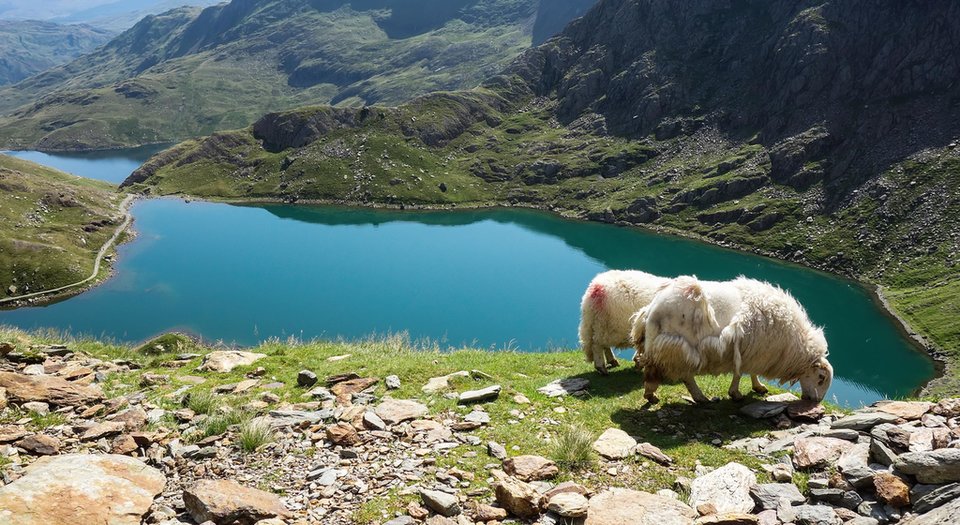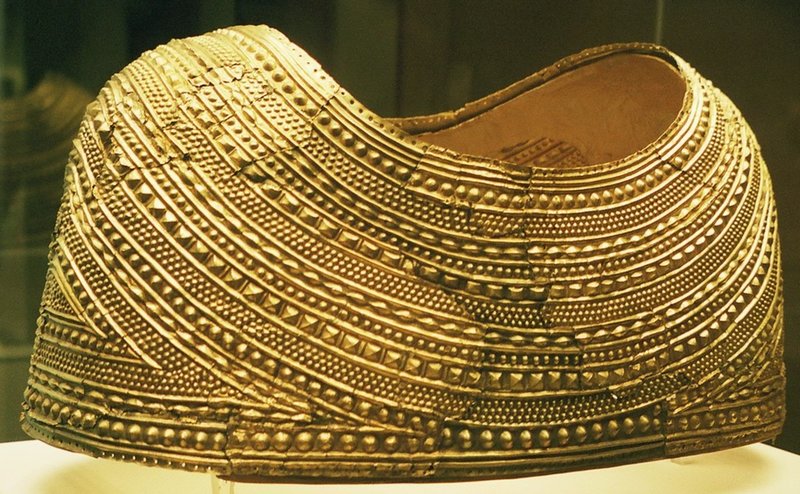Dragon’s Hoard:
The Allure of Welsh Gold
Scroll down to read the article
Running along the south-eastern fringes of picturesque Coed y Brenin Forest Park in North Wales, the Afon Wen River isn’t a place in which one would usually expect to see police investigators taking an active interest. In May, however, North Wales Police did exactly that, launching an investigation into the activities of suspected gold panners in the river.
The police are reportedly supporting government body Natural Resources Wales (NRW) in monitoring activity at the Afon Wen. While gold panning isn’t illegal in itself, NRW has expressed concern that panners could be inadvertently damaging the riverbed and banks, the flora and fauna of which have seen it declared an area of special scientific interest.
“We are investigating the legality of gold panning activity on NRW-managed land in the Afon Wen at Hermon, near Dolgellau,” said Detective Constable Eryl Lloyd. “Our aim is always to work with others to protect the environment. However, if this is not possible we will take legal action.”
Although NRW has refused to speak in detail about the activity for fear of encouraging new prospectors to try their luck, the agency was quick to point out that the activity has been very small-scale, likely only involving a few individuals. No Gwynedd gold rush just yet, then.
Local gold panners argue that they are continuing a centuries-old tradition of prospecting in the area. The target, in the past and today: So-called ‘Welsh gold’, which has been mined in certain regions of Wales for thousands of years. The rarity and unique heritage of this commodity has seen it described as the world’s most sought-after gold, with a value to match. What is the history of this much-mythologised Welsh gold, and what are the secrets behind its enduring allure?
The origins of
Welsh gold
Welsh gold has historically been mined from two regions in Wales, in the north and south of the country. The northern source is the Dolgellau Gold Belt, which runs from the town of Barmouth towards Snowdonia in the north. This region was the primary source for the main glut of Welsh gold production in the 19th and 20th centuries.
The southern connection for Welsh gold, Dolaucothi in Carmarthenshire, contributed to gold production in the Victorian era and the early 20th Century, primarily through the Pumsaint gold mine, which closed in 1938.
However, the region is most famous as the site of the remains of the only known gold mines operated by the Romans in Britain. Archaeological discoveries point to the advanced techniques used by the Romans from 74AD, including aqueducts used to transport water for prospecting.
The site has remains of the only known gold mines operated by the Romans in Britain.

The Snowdonia area was a hub of gold panning and excavation in the 19th and 20th centuries.
Clogau Gold Mine produced more than 78,000oz of gold…between 1862 and 1911
Industrial peak and decline
The second half of the 19th Century brought large-scale industrial mining of Welsh gold, especially in the Dolgellau Gold Belt, where the ‘Welsh Gold Rush’ kicked off around 1860, with a number of mining operations springing up around the area. Two of the most lucrative mines of the time were the Clogau Gold Mine, which produced more than 78,000oz of gold from 165,000t of gold ore between 1862 and 1911, and the Gwynfynydd Gold Mine. Gwynfynydd was operated for long stretches by William Pritchard Morgan, characterised as the ‘Welsh Gold King’ for the two separate bonanzas he discovered at the mine.
The difficulty of accessing the gold, coupled with the expense of extracting it, sent the Welsh gold mining industry into a slow decline through the 20th Century. Clogau closed in 1998, with Gwynfynydd following a year later. The fact that there is no current industrial-scale production of Welsh gold has made it incredibly rare as a commodity on the market, driving its value up and giving it a certain mystique, an image that has been skilfully cultivated by the Welsh jewellers that sell pieces containing Welsh gold, usually in trace amounts.
As well as its rarity, Welsh gold has benefited from an extra lustre thanks to a long-standing connection with the UK's royal family. The custom of using Welsh gold at royal ceremonies started in 1911, when it was incorporated into the regalia used for Prince Edward of Wales’s investiture at Caernarfon Castle.
The Queen Mother’s wedding to the Duke of York in 1923 made use of wedding rings made from pure Welsh gold, a tradition that continues to this day. Other royal weddings to include Welsh gold rings include Queen Elizabeth II’s marriage ceremony in 1947, Prince Charles and Princess Diana’s wedding in 1981, and Prince Harry and Megan Markle’s wedding in May.
Rare Welsh gold has been used in royal decoration for centuries, such as this Bronze Age golden cape. Credit: David Monniaux.

It is essential to pay wage arrears in full [and] stamp out corruption in the industry
A Welsh gold revival?
Small-scale mining efforts have proven the inflated value of Welsh gold when compared with spot gold prices. From 1979 to 1981, father-and-son team Ray and Kerry John Thackwell prospected for gold at the site of the Clogau mine, having obtained a government licence to mine.
The raw Welsh gold mined by the pair was put up for auction in ten lots in Colwyn Bay, north Wales. The haul was expected to fetch around £9,000 in total, but ended up selling to a single buyer for £44,000. One lot, comprising half an ounce of gold flakes and dust, sold for £10,500.
With the premium that comes with Welsh gold, it’s little surprise that there is interest in restarting production. There have been sporadic calls for official licencing processes for gold panners, but UK-headquartered mining company Alba Mineral Resources has bigger plans in mind. Having acquired a 49% stake in Gold Mines of Wales, which owns the Clogau Gold Mine complex, Alba has announced plans to restart operations at the mine before the end of the year.
“The opportunity presented by this project is pretty unique – high-grade gold in the heart of the United Kingdom, and the fact that Welsh gold attracts a significant premium,” said Alba executive chairman George Frangeskides in December last year. “The historic connections of Welsh gold with the heritage of the United Kingdom and the potential for finding more gold in the vastly under-explored exploration ground make a strong case for investment.”
One lot, comprising half an ounce of gold flakes and dust, sold for £10,500.